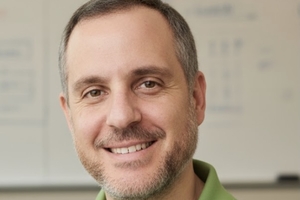What is your current position?
Founder and Chief Possibility Catalyst at the L.E.A.D. Agency

What is your proudest professional accomplishment?
Publishing my first peer-reviewed article, “Engaging Youth in Philanthropic Practice: Field-Building Strategies and the Promise of Youth-Possible Philanthropy™,” in The Foundation Review (Vol. 17, Issue 1, 2025). The piece crystallizes a framework I developed—Youth-Possible Philanthropy™—which invites foundations and the philanthropic sector writ large to authentically share power with young people and historically resilient communities as co-creators in shaping social impact. This work represents an intentional effort to build the field of youth-centered, equity-driven philanthropy. Seeing it inform national and global funders’ approaches to equity, systems change, and youth voice has been deeply rewarding.
How did Penn GSE influenced your professional path?
Penn GSE profoundly shaped how I bridge scholarship and practice. The executive-format doctorate program nurtured my identity as a scholar-practitioner—someone who not only studies systems change but also designs strategies to bring it to life. My research on possibility development—the process by which individuals transform aspirations into actionable opportunities—was strengthened at Penn and later became foundational to Youth-Possible Philanthropy™.
As a trusted and certified Impact Philanthropy Advisor (IPA), that grounding continues to guide my work with high-net-worth individuals, foundations, communities, and resilient youth to align education, philanthropy, and systems change for the public good and deeper, more sustainable impact. Penn also helped me connect the through-line across my career—from the classroom as a middle school social studies teacher, to public and community affairs roles serving elected officials, to philanthropy, where I began my foundation career focused on education and youth development. Those experiences ultimately converged in my leadership of three national funder networks at Grantmakers for Education, shaping the Grantmakers Institute at Harvard, advising a former U.S. Secretary of Education on place-based community investments, and convening cross-sector partners to advance equity and impact. Each chapter now feels part of a larger continuum of possibility practice that Penn empowered me to name, study, and scale.
What was the best part of your Penn GSE education?
The most transformative part of my Penn GSE experience was the intellectual rigor and mentorship I received from my professors, particularly during the dissertation journey. Their guidance inspired the foundation of Youth-Possible Philanthropy™ and ultimately The L.E.A.D. Agency—a social impact firm advancing youth voice and agency in philanthropic practice. I especially valued my dissertation defense, where I had the opportunity to engage both Penn professors and foundation leaders—true field-builders—in a rich dialogue about how research can drive equitable, youth-centered change. One of the most meaningful moments was getting to tell the story of my niece, whom I deeply adore. In many ways, my work is about catalyzing investments for youth like her and her peers—young people full of promise and well-poised for greatness, regardless of the zip code we both shared as children. I am continually inspired by her potential to L.E.A.D.—to Learn, Excel, Achieve, and discover her Destiny. Penn GSE challenged me to reimagine how philanthropy can serve as both a civic engine and a pipeline for youth as change agents in a complex world. The research process pushed me to bridge theory and practice in real time—translating ideas about equity, leadership, and systemic change into actionable models that now shape how foundations engage youth in strategy, grantmaking, and governance.
What’s next?
I recently launched the national and global Youth-Possible Philanthropy™ Practice Network—a learning and practice community of funders, youth, and participatory researchers advancing equitable, youth-centered philanthropy in practice. The network positions youth as leaders in direct partnership with philanthropy to advance cross-sector systems change.








